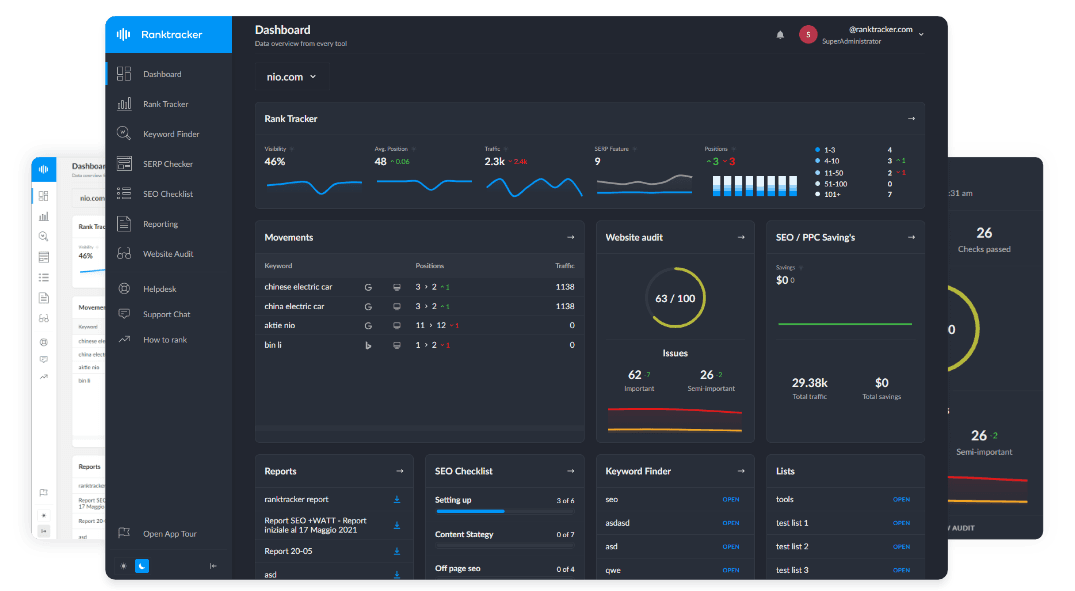Intro
Evaluating your website’s Experience, Expertise, Authoritativeness, and Trustworthiness (E-E-A-T) performance is crucial for identifying strengths and areas for improvement. While E-E-A-T itself is not a direct ranking factor, its principles influence how search engines and users perceive your site, making it an essential part of a robust SEO strategy.
This guide explores how to measure your website’s E-E-A-T performance using actionable methods and tools.
How to Evaluate Your Website’s E-E-A-T Performance
Conduct a Content Quality Audit
Review your existing content to ensure it aligns with E-E-A-T principles. Look for gaps in expertise, outdated information, or lack of trust signals.
- Check if articles have author bios that showcase credentials and expertise.
- Ensure all claims are supported by credible sources and properly cited.
- Identify content that lacks depth, accuracy, or relevance and prioritize updates.
Assess Your Online Reputation
Your website’s reputation significantly impacts E-E-A-T. A poor reputation can undermine trust and authority.
- Search for mentions of your brand online to evaluate customer sentiment.
- Analyze reviews and ratings on platforms like Google Reviews, Trustpilot, or Yelp.
- Look for backlinks from authoritative sites and assess the quality of those referring domains.
Evaluate User Experience
E-E-A-T isn’t just about content—it also includes how users interact with your site.
- Check navigation for clarity and ease of use.
- Ensure key pages (e.g., About Us, Contact, and Privacy Policy) are easy to find and provide complete information.
- Test page load times, as slow-loading sites can reduce user trust.
Analyzing Metrics for E-E-A-T Insights
Bounce Rate
A high bounce rate may indicate that users do not find your content engaging, relevant, or trustworthy.
- Identify pages with the highest bounce rates using Google Analytics.
- Improve those pages by ensuring they align with user intent, include clear calls-to-action, and demonstrate authority through expertise or references.
Time on Page
Longer time on page suggests that users find your content valuable and trustworthy.
- Track time on page using tools like Google Analytics or Hotjar.
- Optimize pages with low engagement by adding multimedia (videos, images) and breaking up text for easier readability.
Conversion Rates
Trust and authority often lead to better conversions, whether it’s newsletter sign-ups, purchases, or downloads.
- Analyze conversion rates for key pages using tools like Google Analytics or your CRM.
- Test trust signals like badges, reviews, and testimonials on landing pages to see their impact on conversions.
Trust Signals
Track user engagement with elements that build trust, such as:
- Clicks on author bios.
- Interactions with social proof (e.g., reviews or testimonials).
- Time spent on case studies or About Us pages.
Review Sentiment
Monitor the sentiment of customer reviews and testimonials across platforms. Positive reviews indicate trustworthiness, while negative ones may highlight areas for improvement.
Using Tools for E-E-A-T Insights
Google Search Console
Google Search Console provides valuable insights into how Google perceives your website. Use it to track key metrics:
- Impressions and Click-Through Rates (CTR): High CTRs suggest that your content is perceived as authoritative and relevant.
- Search Queries: Analyze the queries bringing users to your site. Are they aligned with your expertise and authority?
- Page Experience Report: Ensure your site passes Core Web Vitals, which measure load times, interactivity, and visual stability.
Google Analytics
Google Analytics helps you analyze user behavior and engagement metrics:
- Monitor user flow to identify where visitors drop off.
- Compare bounce rates and session durations across pages to pinpoint underperforming content.
- Segment traffic by source to evaluate the effectiveness of partnerships or mentions from authoritative sites.
Online Reputation Tools
- Brand Mentions: Track where your brand is being mentioned and assess whether the mentions are positive.
- Ranktracker or SEMrush: Analyze your backlink profile to see if you’re earning links from authoritative websites in your niche.
Review Monitoring Tools
- Trustpilot, Google Reviews, or Yelp: Use these platforms to monitor user reviews and address concerns.
- Social Listening Tools (e.g., Hootsuite, Brandwatch): Monitor social media mentions of your brand to gauge sentiment and reputation.
Content Audit Tools
- ContentKing or Screaming Frog: Use these tools to audit your website for outdated content, broken links, or missing metadata that could undermine trust.
- Ahrefs: Check if your content is optimized for keywords while maintaining depth and quality.
Improving E-E-A-T Based on Metrics
Address High Bounce Rates
- Revisit underperforming pages to ensure they meet user intent and include actionable information.
- Add visuals, such as images, videos, or infographics, to improve engagement.
Optimize Low-Engagement Content
- Ensure the content is well-structured with headings, lists, and short paragraphs for easy readability.
- Include internal links to guide users to other relevant pages.
Respond to Feedback
- Address negative reviews or feedback promptly and professionally to show that you value customer input.
- Highlight improvements or changes made in response to user feedback.
Improve Trust Signals
- Add trust badges, certifications, and affiliations to your site.
- Display clear privacy policies, terms of service, and contact details prominently.
Update Content Regularly
- Monitor pages with outdated information and prioritize updates.
- Include the “Last Updated” date to show users that the content is current and actively maintained.
Final Thoughts
Measuring E-E-A-T is an ongoing process that involves analyzing metrics, auditing content, and engaging with your audience. Use tools like Google Search Console, Google Analytics, and review platforms to gain valuable insights into how users and search engines perceive your site. By focusing on user engagement, trust signals, and online reputation, you can continuously improve your E-E-A-T performance and build a website that both Google and users trust.
Let me know if you'd like to expand on any section or discuss specific tools in more detail!

